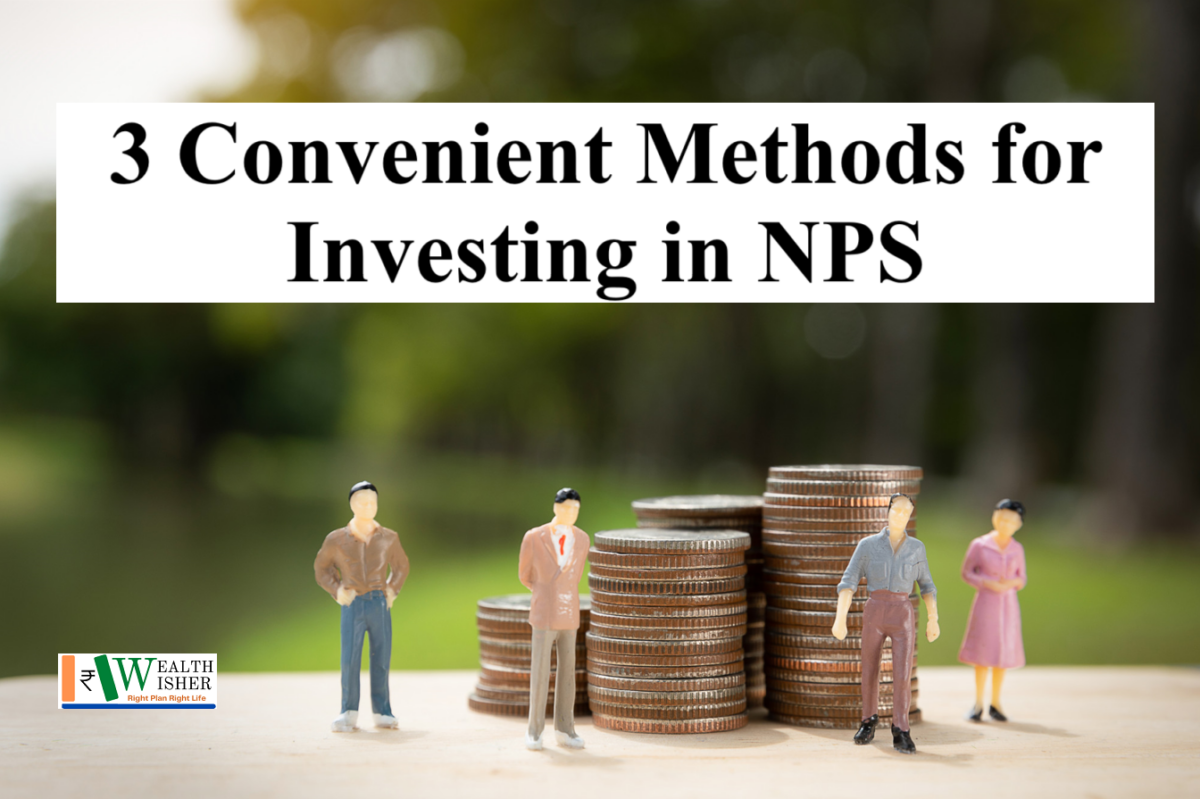Investing in NPS (National Pension System) offers the dual benefit of securing retirement while leveraging tax savings. With features such as market-linked returns, the freedom to choose between asset classes, and tax-saving additional benefit of up to ₹50,000 on annual investments (Via Old Tax Regime) in Tier 1 accounts, NPS has emerged as a popular choice among investors. This artcile deals with 3 Convienient Ways to Invest in NPS.
NPS is also the only allowed benefit in the New Tax Regime. Under Section 80CCD (2), you can deduct your employer’s contribution. Hence at the year’s end, NPS subscribers search for Ways to Invest in NPS & options to make the payment.
We have already covered NPS as product in details here & here.
Here’s a closer look at three Ways to Invest in NPS—each tailored to suit different needs:
Ways to Invest in NPS

-
Point of Presence Service Provider (POP-SP)
Subscribers can contribute to their NPS accounts at POP-SP or nodal offices through cash or cheques. POP-SPs include banks and other firms offering NPS services.
A large network of Public Sector Banks, Private Sector banks, Post Office, Offices of Karvy & CAMS & UTI Mutual Fund act as POP for NPS.
- Collect an NPS contribution instruction slip from your nearest POP-SP.
- Fill out the slip with your details and payment information.
- Submit the slip and payment to the same POP-SP.
The minimum contributions are ₹500 and ₹250 for Tier 1 and Tier 2 accounts, respectively, with no maximum limit. However, cash deposits exceeding ₹50,000 will require KYC documentation.
-
e- NPS
This online method allows investors to use net banking, debit cards, credit cards, or UPI to make contributions. Payments are credited to your NPS account on a T+2 basis, ensuring faster processing compared to cash or cheque deposits.
- Visit the official eNPS website (https://enps.nsdl.com).
- Click on “Contribution” and select “Contribution Online”.
- Enter your PRAN, date of birth, and other details.
- Select the account type (Tier I or Tier II) and the contribution amount.
- Choose your preferred payment gateway (debit card, credit card, or net banking) and make the payment.
You can also log in to your NPS account via NSDL, the NPS website, KFin, or your bank’s website via net banking. You can contribute using your bank or any other mode as allowed by the website.
NPS also has an app on Android &IOS. Download the NPS Mobile App from the Google Play Store or Apple App Store. You can contribute even without logging in.
- Enter your PRAN, date of birth, and CAPTCHA, and verify your PRAN.
- Select the account type and contribution amount.
- Choose your payment gateway and make the payment.
-
Direct Remittance (D-Remit) in NPS
Introduced in 2020, D-Remit is an electronic facility for instant money transfers to the NPS trustee bank. It enables investors to secure the same-day NAV for their investments. To use D-Remit, subscribers need to create a virtual ID on the CRA website and register it through net banking. The minimum contribution through D-Remit is ₹500, and contributions must be made before 9:30 AM on working days for same-day NAV.
The benefits of D-remit include convenience. D-Remit simplifies the process of making voluntary contributions to NPS. Subscribers can get the same-day NAV for their investments, which helps optimize returns. Subscribers can also choose to make contributions through NEFT, RTGS, IMPS, or UPI. There is no additional cost to NPS subscribers for using the D-Remit facility.
Investors can also choose between lump-sum contributions or opt for Systematic Investment Plans (SIPs) Ways to Invest in NPS. Whether you’re seeking convenience, speed, or flexibility, NPS caters to diverse investment preferences.







